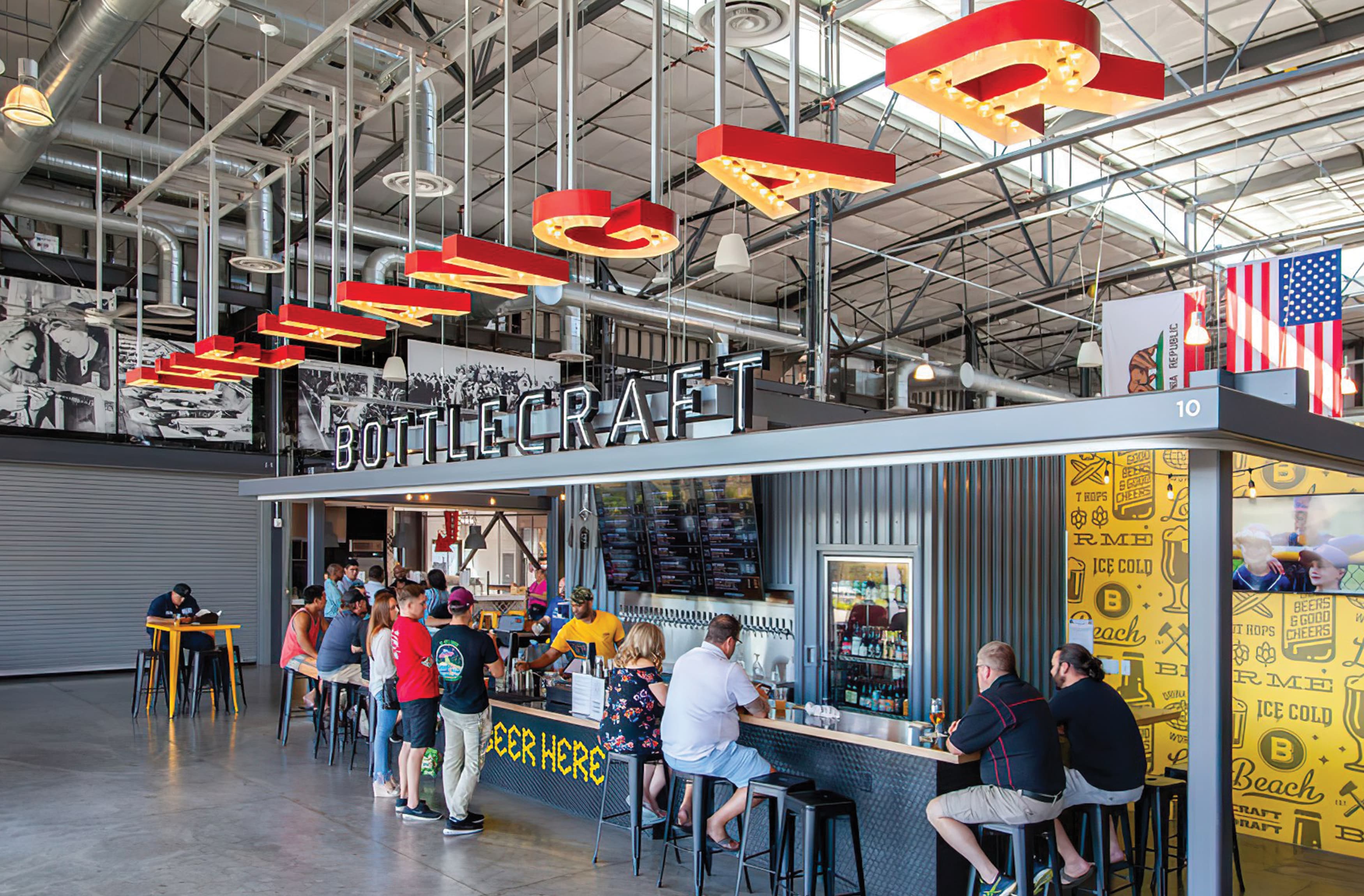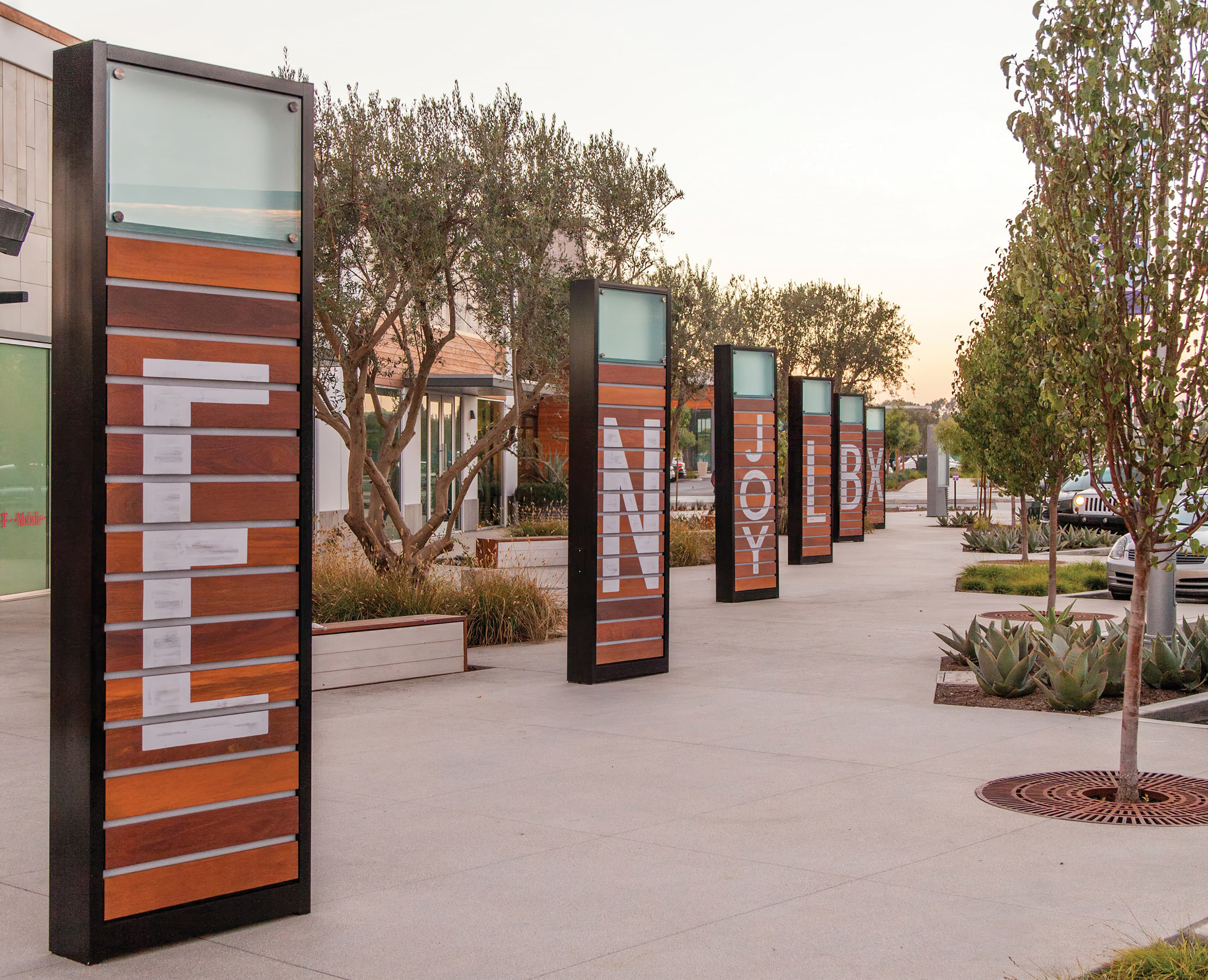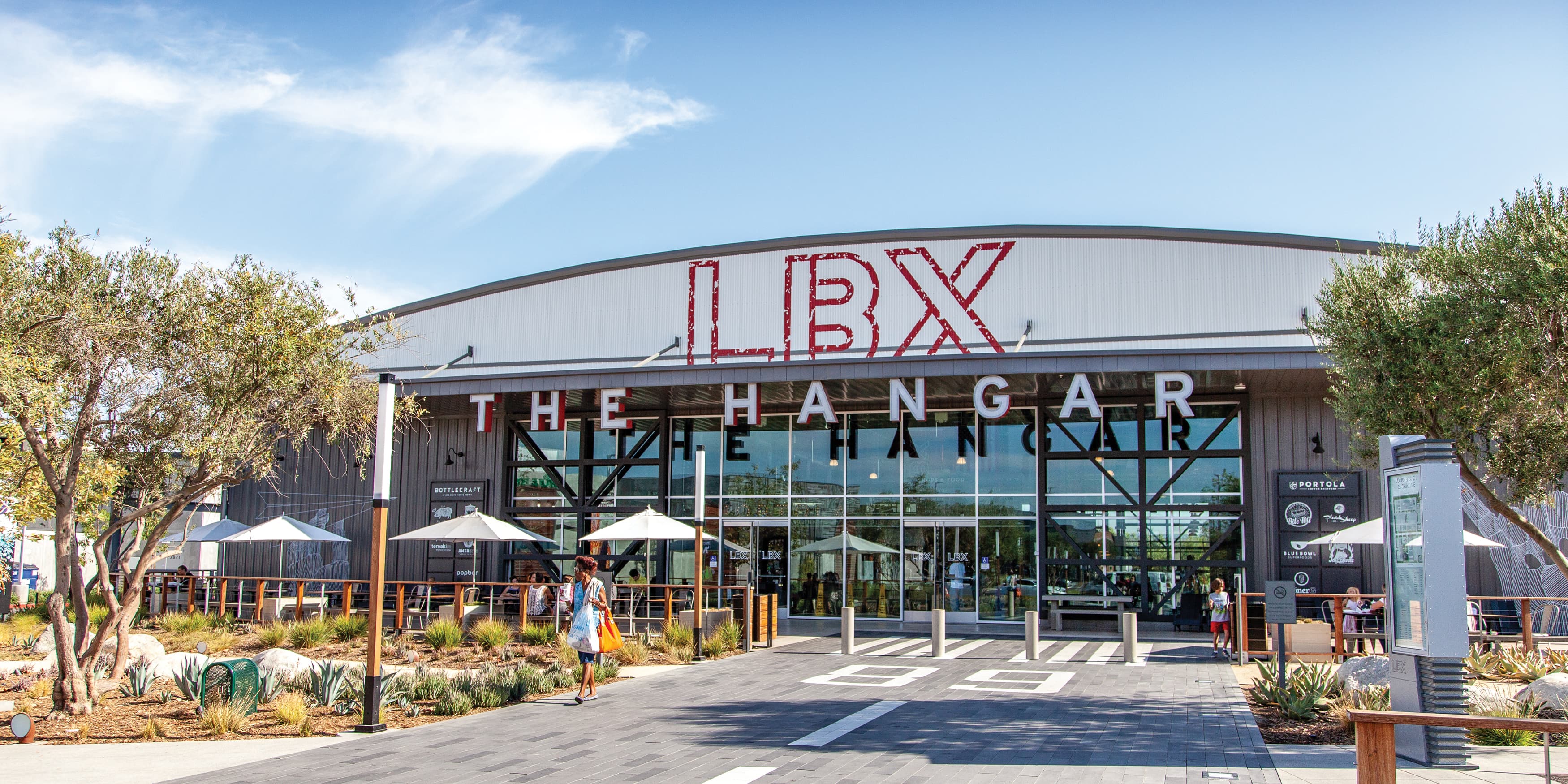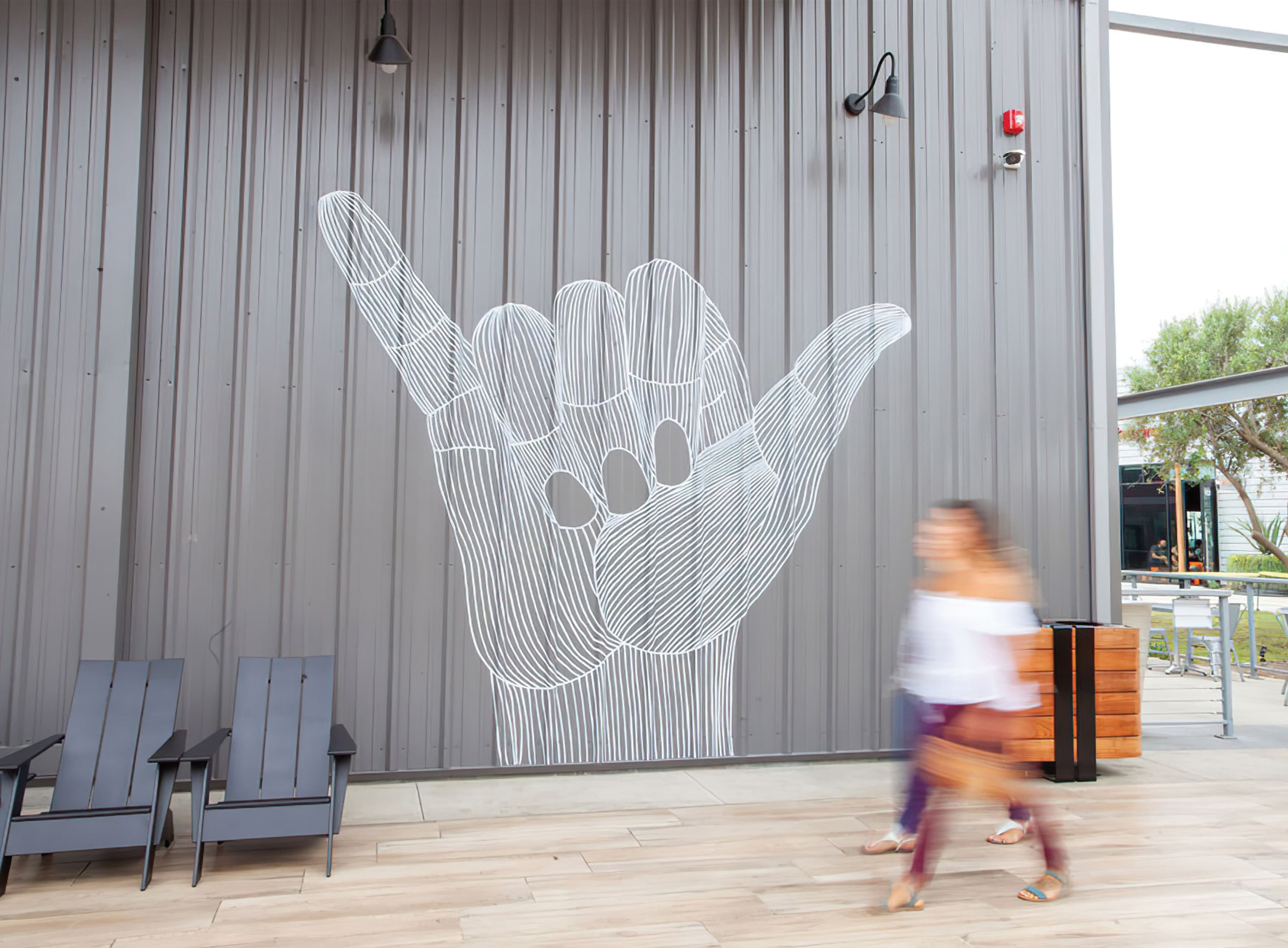September 20, 2019
Connecting People to Place · Part 1: Experiential Design at the Long Beach Exchange

September 20, 2019


The psychology of design is an essential ingredient in connecting people to place. More than simply decorating a space, environmental graphic design is critical to establishing the purpose of a space, the visitor’s place within it, and helping to shape the overall experience. While a visitor may never recognize that design is at play, the work environmental graphic designers do, is essential to establishing that unconscious connection.
Environmental graphic design is about creating a vocabulary of design elements that reinforce the architecture and help define the context for a place that people will connect with. Subtleties in design can have a huge impact. A different typeface can completely change the vibe of a place. A well-placed bench can bring moments of comfort and joy. A cool mural or graphic can inspire selfies to share with others. These are the emotional connections that drive people, the unconscious aspects that create resonance and transform a simple visit into a dynamic and memorable experience. This is the art of environmental graphic design at its most powerful.


The creative work of RSM Design lives at the intersection of architecture and the human spirit. It is this unique blend that poses the best opportunities and inspires thoughtful and creative design solutions.
Stay tuned for parts 2-4 of this blog series
We create places for people to linger, we guide them to new destinations, and we facilitate shared experiences. The design is clearly more than an aesthetic overlay, going beyond making environmental elements look good, to express the essence of a place. The infusion of design profoundly connects the space to the people that will inhabit and visit the place.
Designers of experiential environments have a broad palette to work with—identity, typography, symbols, materials, colors, wayfinding, public art, for example—all the tools needed to root the environment in its place and make it meaningful to each person. A subconscious connection in forged by building an immersive experience that resonates more deeply than words.
The neighborhood… the town center… the park… the school… the museum. These are destinations that we return to again and again. They are the soul of our community, the anchors for our memories, and the spaces for inspiration and learning. Creating these unique places requires a vision which combines an appreciation of the human experience, a clear understanding of the built environment, and the relationship between the two.
There are no templates in creating places that people truly engage with and appreciate, as every place is uniquely different. Each place offers insights into varied cultures, uses, or perspectives that require their own original recipe for design. It is essential for experiential graphic designers to translate the unique character and qualities of a place with relevance, resonance, and inspiration.